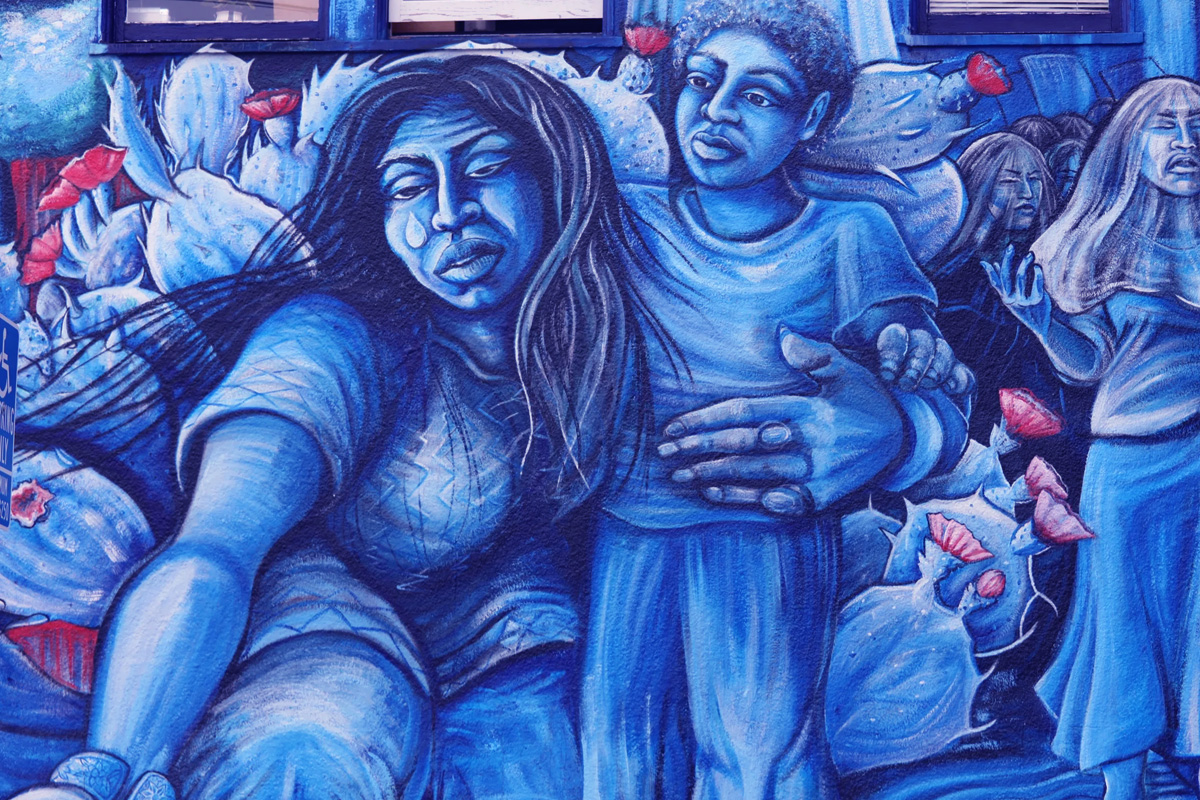Two sunny Saturdays ago, I logged onto zoom and attended a virtual memorial for my friend’s grandfather. Unfortunately, I had to leave early to attend another memorial service for a childhood friend. As I was both watching the slide-show tribute to my friend and feeling bad that I had to leave the prior service early, the situation started to feel strangely familiar. I flashbacked to 30 years ago, to Feb. 2, 1991—the day I had to leave the funeral of a friend early to go to another because both were happening at the same time.
“That’s it,” I remember saying to myself back then. At the age of 28, I was done with funerals. For years, I attended 2, 3, even 4 “celebrations of life” each week. While folks back home were getting married and starting families, I spent my 20s caring for, and burying friends. Despite my feelings of being done with funerals, I kept on going for five more years, until the advent of combination antiretroviral therapies rendered AIDS a chronic vs. a fatal disease, and my weekly rituals came to an end—until this year.
In recent months, the advent of vaccines promises to curtail the COVID-19 pandemic. But it has come too late for 525,000 people in the United States and 2.6 million people worldwide. According to The New York Times, one in three Americans has lost someone to the coronavirus.
In the course of one recent week, I learned of five people in my community who have died. One dear friend lost both her sister and her sister’s husband; another lost her cousin; a colleague lost his grandmother; and a mentor bid goodbye to one of her childhood friends.
“This is a banner year for grief. Everywhere you look, precious beings and things are gone,” my husband, Greg, said.
The grief across our communities is palpable, and it goes beyond the death of loved ones. Many of us are grieving the loss of work and school, our connections with friends and family, traveling, our daily routines, our communities, and even life as we once knew it.
“In the midst of the pervasive grief we are collectively experiencing, how can we live, perhaps even thrive, with grief?”
I have learned two lessons from the HIV/AIDS years help me navigate the realities of our current times:
Lesson 1: Grief is inevitable, because it is inextricably linked with love.
“But what is grief, if not love persevering?” This statement caps off a beautiful passage by a television character appropriately named Vision that drives to the very core of this lesson—love and grief are inextricably linked. Grief manifests from the loss of a cherished person, possession, or situation, creating a vacuum in our psyche that cannot be fully refilled. While we may find a new person or pet to love, a community to belong to or object to possess, it can never replace the original.
Grief is also inevitable. It is part of our experience from our earliest days. Young ones cry over a parent going away, even if it’s for a few moments, a lost toy, or later in life, the sorrow of losing their first love. The initial stages of grief can be excruciating. I have certainly experienced those spells, and the extent of that grief cannot be measured by time, or the relative depth of that loss. But if we can find a way to integrate grief as a continuum in our lives, we can be more equipped to resist the temptations of filling the vacuum with unhealthy patterns or addictions.
I remember turning to unhealthy behaviors to fill the void during the HIV/AIDS years. The amount of grief that was compounding in my life seemed to leave me with no options. But I learned how to handle my grief from someone who had the most to lose—my friend Tom, who literally taught me to not be afraid of the grief, but to embrace it.
Lesson 2: By embracing grief, you can find comfort and even joy.
Tom and I were choir buddies at church. We were both tenors, movie buffs (he had a knack for reciting classic movie lines just at the right moment), and always sat next to each other on Thursday-night rehearsals and Sunday services. After he was diagnosed with AIDS, Tom’s health rapidly declined. When I visited him at Coming Home Hospice, he weighed 93 pounds and had just soiled his bed. As the attendant cleaned him up, I grabbed his hand, bawling as I repeated, “I’m sorry, I’m sorry.”
Tom squeezed my hand, looked at me with his bright blue eyes, and sang, “Blessed are you, who weep and mourn, for one day you shall laugh.”
He beckoned me to sing with him as we continued one of our favorite hymns, “Be not afraid. I go before you always. Come follow me. And I will give you rest.”
After we finished singing, he said, “When you think of me, remember this moment—I’m wasted away and I just shit all over myself. And also remember all the times we sang and laughed in church. Because both are real.”
Tom died a week later, on Aug. 18, 1991. He was 36 years old.
I have found respite in the knowledge that the grief I carry for loved ones who have passed on are ever present, for it means that the love is still persevering.
I fill the void of grief with love when I make my grandmother’s winter melon soup. I feel Gerard’s embrace when I catch the scent of wisteria in the air, and I see Mama Lila’s smile when I have a dish of toasted almond ice cream. Scott moves through me when I dance hula. And whenever I sing “Be Not Afraid”—like I did this morning—the presence and abiding love that Tom Cuthbert-Sims gifted me provides as much comfort today as it did 30 years ago.
How can we find moments of joy and comfort in the midst of the deepest throes of grief?
It requires us to look, hear, feel and receive deeply—to notice moments of light and love in the center of the pain. To hold onto them, and let them be a salve of comfort and respite as we struggle to fill the void left by grief.
It also requires us to be sources of comfort and joy for each other. That is why I post photos of sunsets, local street art or of me waving at the camera on social media every day. That is why I text my friends silly riddles (What do you call a bunch of rabbits hopping backwards? A receding hareline!). If these small gestures provide just a moment of respite in someone’s day, it’s worth the effort.

Questions for Reflection and Consideration
- Who or what are you grieving right now?
- How can you be open to receiving joy and respite in the midst of your grief?
- What are some simple ways you can bring respite to you and others who are grieving?
Editor’s note: A year ago, on March 15, 2020, the Mississippi Free Press published our first piece as Mississippi began sheltering at home: Kevin John Fong’s “Love in the Time of Corona.” Kevin serves on the MFP’s advisory board.
This piece was published in cooperation with Elemental Partners, an independent, nonprofit publisher of commentary and analysis, authored by academics on timely topics related to their research.
This MFP Voices essay does not necessarily represent the views of the Mississippi Free Press, its staff or board members. To submit an essay for the MFP Voices section, send up to 1,200 words and factcheck information to azia@mississippifreepress.com. We welcome a wide variety of viewpoints.






